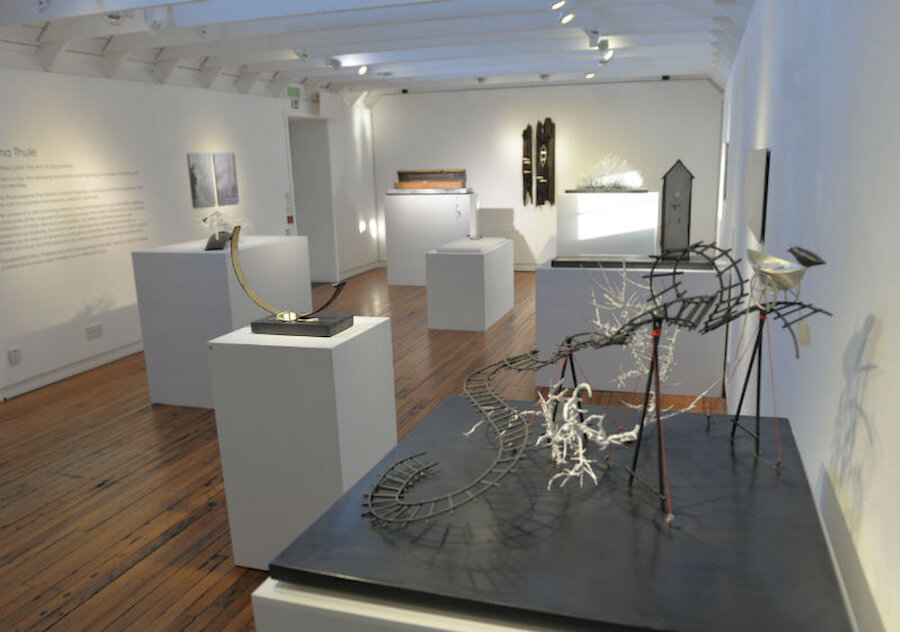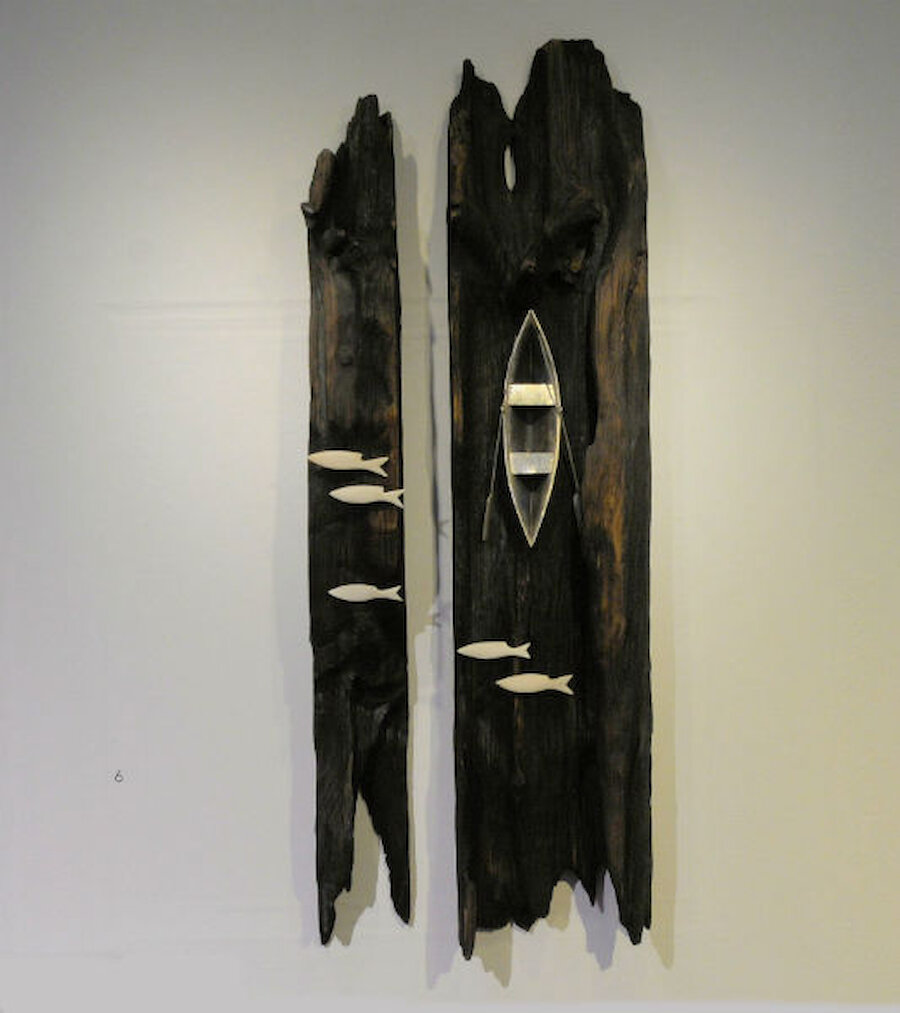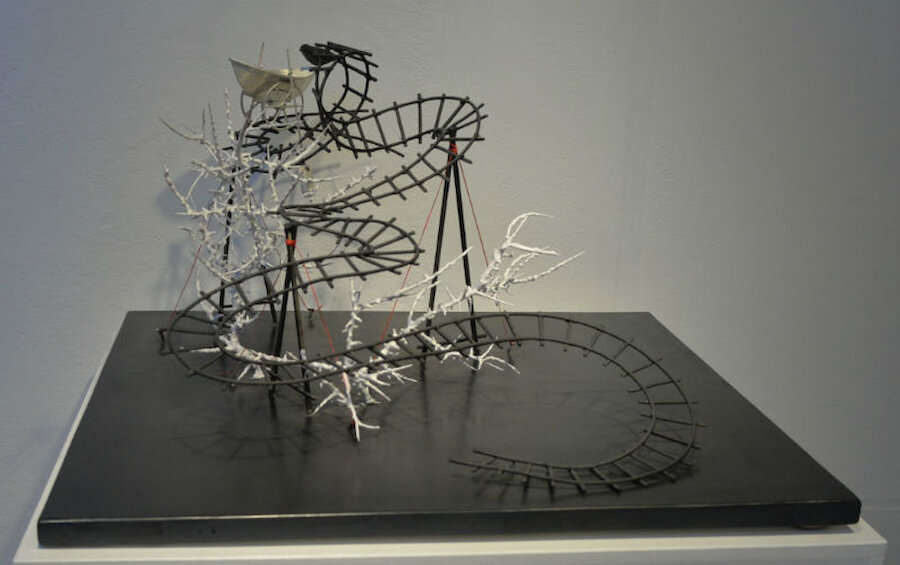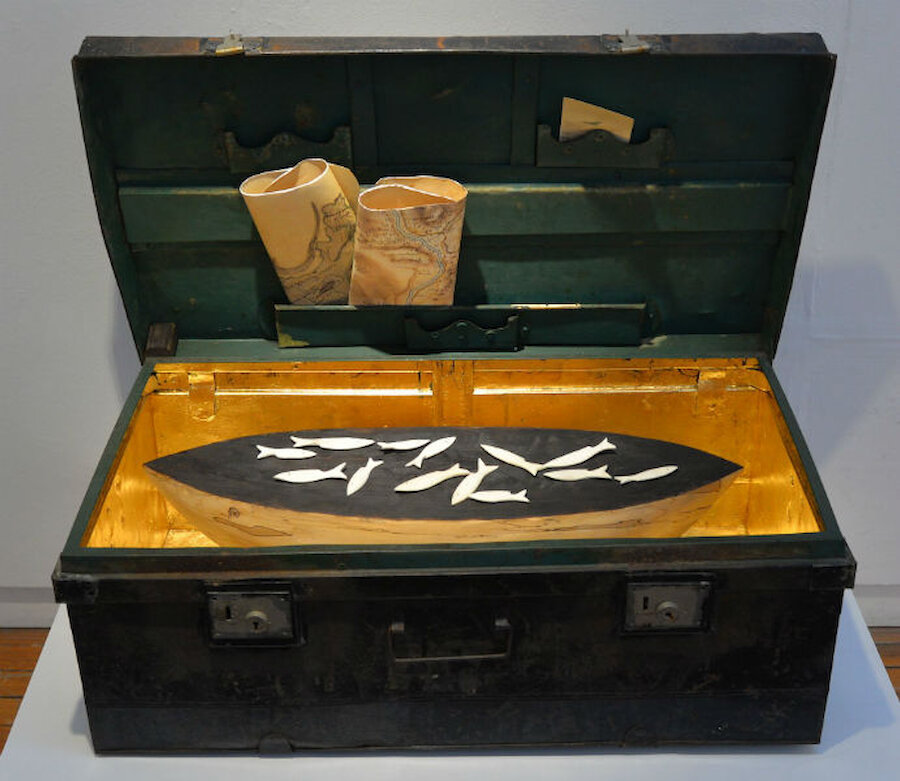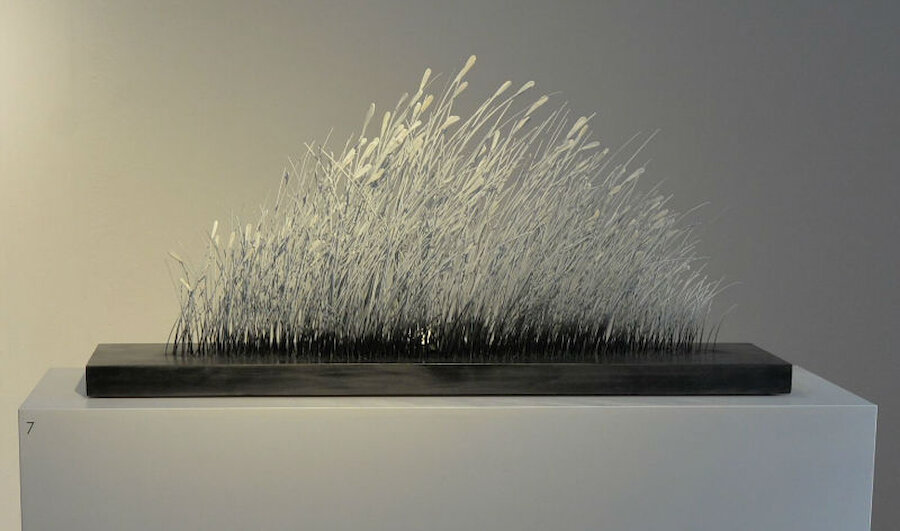Migration is part of life for many people, including many who, over centuries, have made the move to Shetland. It’s often a very positive experience, but any journey into new territory can be accompanied by a mixture of hope and trepidation. Lucy Woodley’s current exhibition at the Bonhoga Gallery explores feelings around migration, and they range from the benign outcome of successful journeys to the fear and uncertainty, or worse, felt by those who’ve fallen victim to traffickers.
Lucy graduated from Gray’s School of Art in Aberdeen in 1992. Having studied jewellery there, she ran a successful jewellery business, based in the Highlands, for 20 years. These days, though, her focus is on sculptural works for galleries and private commissions.

